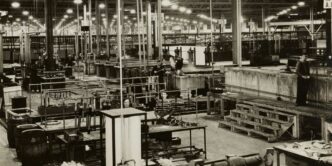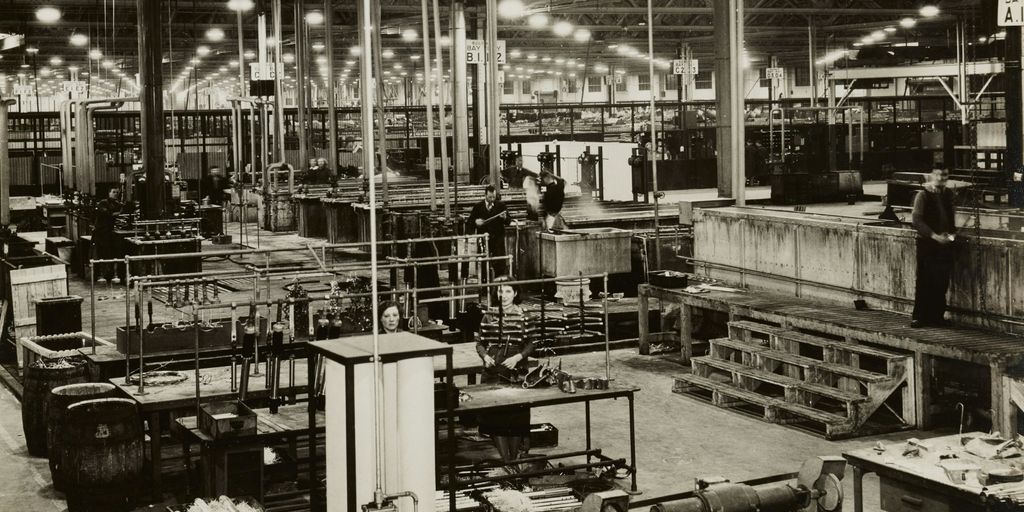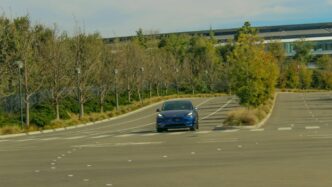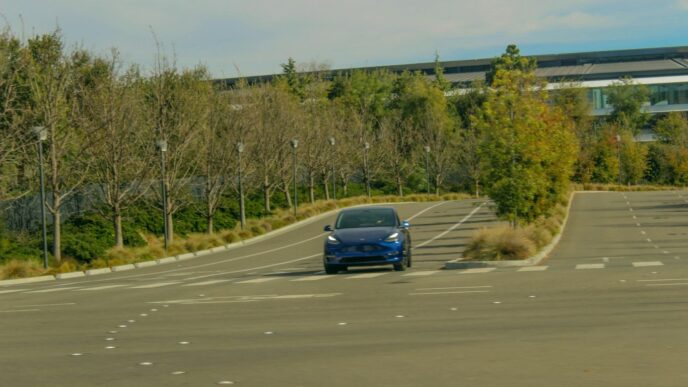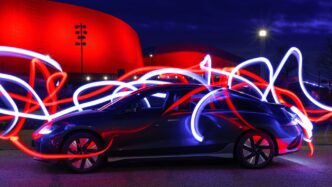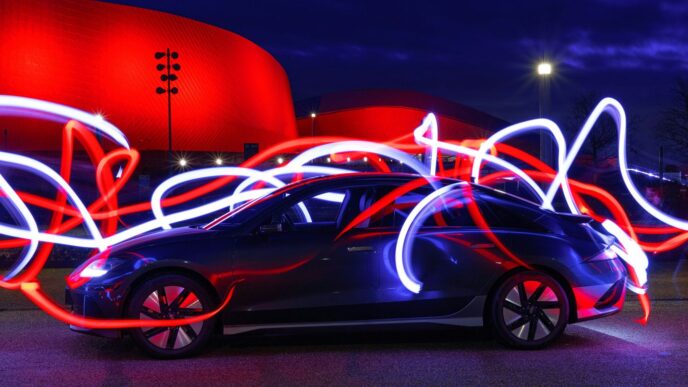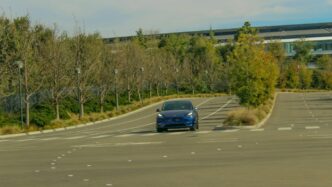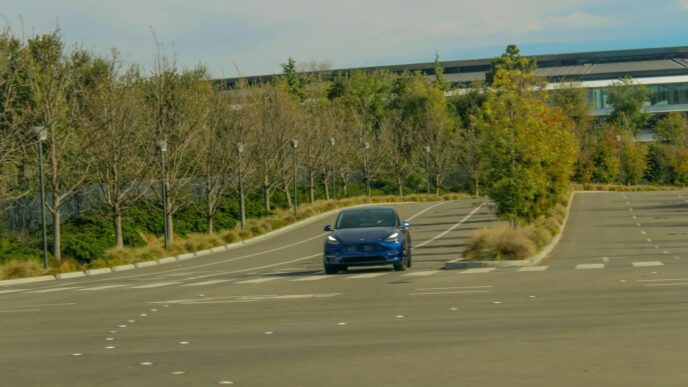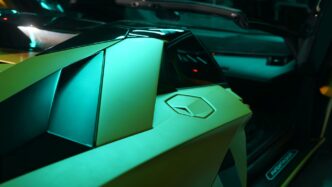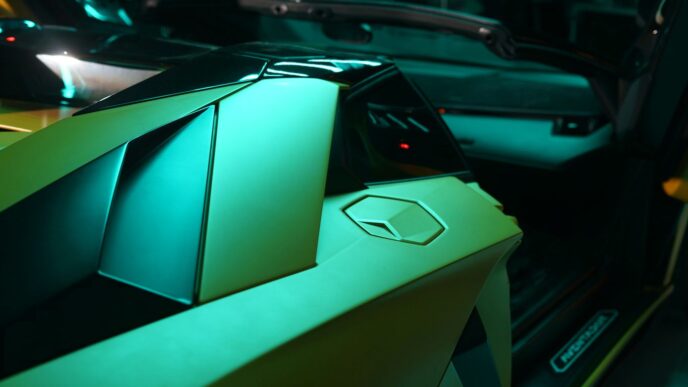So, you know how electric cars are everywhere these days? Well, there’s this huge company, BYD, that’s been quietly making a massive splash in the EV world. They’re based in China, and honestly, they’re giving some of the big names a real run for their money. We’re talking about a company that started small and just kept growing. Let’s take a closer look at the byd factory and how they became such a powerhouse in electric vehicle manufacturing.
Key Takeaways
- BYD started out making batteries and then used that know-how to get into electric vehicles.
- They’ve become a huge global player, even selling more EVs than some well-known brands in certain periods.
- BYD makes a lot of its own parts, which helps them control their costs and avoid supply problems.
- Their cars are often much cheaper than competitors, making EVs more affordable for more people.
- BYD is looking to expand even more, aiming to be one of the top car makers worldwide.
From Batteries to Electric Behemoth
A Humble Beginning
Okay, so BYD’s story is actually pretty cool. It all started back in 1995 with Wang Chuanfu. He wasn’t trying to build cars at all! He was a researcher who decided to start a battery company. They made batteries for phones and laptops, you know, the usual stuff. They actually became a pretty big deal, like the second-biggest in the world. Who knew that would lead to electric vehicles?
The Big Leap
Then things got interesting. In 2003, Wang Chuanfu bought a car company that was struggling. People thought he was nuts! But he had a plan. He knew batteries, and he figured he could use that knowledge to make electric cars. BYD started by taking apart other cars to see how they worked. It was kind of like reverse-engineering, but it helped them learn how to build their own cars. It was a bold move, and it definitely paid off. They focused on lithium iron phosphate batteries, or LFP, which are now a key part of their success. These batteries are safer and cheaper, which is a big deal for making affordable EVs. It’s amazing how far they’ve come from just making rechargeable batteries!
Global Presence and Unstoppable Growth
Taking on Tesla
BYD’s rise in the EV market has been nothing short of remarkable. They’ve really stepped up their game and are giving Tesla a run for its money. While Tesla is still a major player, BYD has been making serious inroads, especially in terms of sales volume. It’s interesting to see how they’re adapting their strategies to compete head-to-head. Their success in China, with a significant market share, shows they understand the local consumer base. It will be interesting to see how the future of electric vehicle charging plays out as both companies expand.
Strategic Global Expansion
BYD isn’t just focused on China; they’re making moves worldwide. They’ve got a solid foothold in Latin America and Southeast Asia, where you can find their electric buses and taxis all over the place. They’re even planning to start making electric cars in Europe by 2025, which is a pretty big deal. They’re looking at spots in France, Spain, and Germany for factories. While they’re not really in the U.S. passenger EV market because of some political and economic stuff, they still sell electric buses and trucks here. It’s a smart way to maintain a presence and keep their options open. It’s clear they’re thinking long-term and aiming for a truly global reach. The company’s meteoric rise is a testament to its strategic planning.
Innovative Technologies and Vertical Integration
The Blade Battery
BYD isn’t just assembling cars; they’re innovating from the ground up. One of their most talked-about achievements is the Blade Battery. It’s a big deal because it ditches cobalt, which is expensive and often unethically sourced. Plus, it’s designed for enhanced safety. You know how some EV batteries can be a bit… volatile? The Blade Battery is supposed to be much more stable. They’re not just using it in their own cars either; there are rumors that other automakers are buying them too.
Vertical Integration
Okay, so what does "vertical integration" even mean? Basically, it means BYD likes to do everything themselves. From batteries and motors to chips and software, they try to control as much of the supply chain as possible. This gives them a huge advantage because they aren’t as reliant on outside suppliers. Think about the chip shortage a few years back – BYD was better positioned than many other car companies because they make a lot of their own chips. It’s like they’re building their own little EV ecosystem. It’s a bold move, but it seems to be paying off.
Affordability and Market Appeal
Price Competitiveness
One of the biggest reasons BYD has taken off is its focus on keeping prices down. I mean, let’s be real, not everyone can drop a fortune on a fancy EV. BYD gets that, and they’re making electric cars that regular people can actually afford. For example, you can snag a BYD Seagull for around $10,000. That’s a game-changer, especially when you compare it to something like a Tesla Model 3, which will set you back way more. This approach really opens up the EV market to folks in places like China, Southeast Asia, and Latin America, where price is a huge deal.
Customer Perception
Okay, so maybe some people are a little skeptical about super-affordable EVs. I get it. You might wonder if they skimped on quality or safety. But BYD has been proving those doubts wrong. Cars like the Seagull are surprisingly well-made and packed with features. They’re not just cheap; they’re actually good cars. And then you’ve got the BYD Seal, which is a serious contender against the Tesla Model 3. It looks great, drives well, and gives Tesla a run for its money. People are starting to see that BYD isn’t just about cheap EVs; they’re about value.
Challenges and Criticisms

Regulatory and Compliance Hurdles
BYD’s journey hasn’t been without its bumps. Navigating the complex web of international regulations is a constant challenge. For example, back in 2022, there was that hiccup in Australia where deliveries of the ATO 3 model were temporarily stopped because of a child safety seat issue. It’s these kinds of details that can really slow things down. And now, there’s the European Commission’s anti-subsidy probe looking into whether Chinese-made EVs are getting an unfair advantage through state subsidies. That investigation could seriously impact BYD’s plans for expanding in Europe. It’s a lot to keep up with!
Mixed Market Reactions
It’s interesting to see how different people react to BYD. Warren Buffett’s Berkshire Hathaway made a killing on their early investment in BYD, seeing a huge gain by 2021. But, they’ve been selling off a big chunk of their stake since then. Nobody knows for sure why, but it could be anything from geopolitical worries to just wanting to cash in. It just goes to show that even with all the success, there’s still some uncertainty around BYD’s long-term prospects.
Future Prospects and the Road Ahead
Market Leader Aspirations
Okay, so what’s next for BYD? Well, they’re not exactly shy about their ambitions. BYD wants to be the name people think of when they think of EVs. They’re not just aiming to compete; they want to dominate. This means pushing further into international markets, constantly innovating with new tech, and, of course, keeping those prices competitive. It’s a bold plan, but given their track record, it’s not exactly out of the question. They’ve already shaken up the industry, and they’re showing no signs of slowing down. The automotive industry’s success depends on companies like BYD.
Social and Governmental Impact
BYD’s rise isn’t just about cars; it’s also about the bigger picture. The company’s success has a real impact on society and governments, especially in China. The Chinese government has been a big supporter, offering tax breaks and incentives that have helped BYD grow. This support has been crucial, but it also means that BYD’s future is somewhat tied to government policies. If those policies change, it could affect BYD’s growth. Also, BYD’s focus on EVs is helping to reduce pollution and promote sustainability, which is a big deal for everyone. It’s not just about making money; it’s about making a difference. The company’s [electric vehicle (EV) manufacturing](electric vehicle (EV) manufacturing) is a game changer.
BYD’s Impact on Vietnam’s EV Industry
BYD’s Technological Advancements in Vietnam’s EV Sector
Okay, so BYD jumping into Vietnam’s EV scene is kind of a big deal. They’re not just showing up; they’re bringing a whole bunch of tech and know-how that could really shake things up. Their tech expertise is a key factor. They’ve got a ton of research and development under their belt, and that means they’re ready to roll out some pretty advanced EV stuff in Vietnam. This includes everything from better batteries to slick vehicle designs and improved performance. I even heard they filed for some design patents over there for hybrid models like the BYD Destroyer 05 and Cruiser 05.
And get this – they’ve already got EV models that are turning heads and getting people excited in Vietnam. These cars are known for being good quality, efficient, and, you know, not terrible for the environment. That’s creating a lot of buzz and making more people want to switch to electric.
EV Market Growth and Future Prospects
BYD’s plan to build a factory in Vietnam is a pretty clear sign they’re serious about growing there. It’s interesting to see how they’re sizing up the local market. They seem to get what’s going on, which should help them handle any challenges. They’re focused on research and development and have a strong manufacturing base, which is a big plus. Vietnam’s EV industry is still trying to catch up in those areas, so BYD’s investment could really give things a boost. It’s like they’re saying, "We’re here to stay, and we’re ready to help Vietnam become a major player in the EV world."
Competing in the Vietnamese EV Market
Globally, BYD is gearing up to take on the big guys in the EV market. But in Vietnam, it looks like VinFast is their main competition, especially in that mid-range price bracket. Now, even though VinFast is a local company, BYD doesn’t necessarily see them as a direct enemy. Instead, they’re more like rivals pushing each other to do better. It’s good for the whole industry, really. VinFast is definitely a force to be reckoned with, but BYD’s got its own strengths, and it’ll be interesting to see how they both compete and impact market performance.
Driving Collaborations and a Greener Vision
BYD’s presence in Vietnam could lead to some cool partnerships. These collaborations could help transfer technology and boost local suppliers, which would strengthen the whole EV industry. Plus, BYD’s commitment to eco-friendly transportation lines up perfectly with Vietnam’s goals for sustainability. Because they’re pushing for greener mobility, we’re seeing more environmentally friendly EV options in the Vietnamese market, which is great for reducing pollution and carbon emissions.
BYD’s Vision for the Future in Vietnam
BYD wants to shape the future of Vietnam’s EV industry. Their focus on sustainable transportation and new tech is expected to set a new bar and encourage innovation. This influence will probably spread to other companies as they try to copy BYD’s success. Projections look good for BYD in Vietnam once they get their factory up and running. They want to strengthen their position in the global market, and they think Vietnam is a great place to do it. This expansion shows they’re confident in Vietnam’s potential as an EV production hub. For investors watching Vietnam’s EV scene, BYD’s approach offers some valuable lessons. A solid strategy, strong research and development, and a commitment to sustainability are key. As Vietnam’s EV industry grows, BYD’s journey will be a guide for success, showing the possibilities and opportunities ahead.
BYD’s Impact on the EV Landscape 🌟
So, what’s the big takeaway from all this? BYD’s huge growth shows how well they mix new tech, smart market moves, and good prices. They’ve got a lot of government help and they make most of their own parts, which is a big deal. This means BYD isn’t just another car company; they’re a major player in the electric vehicle world. We’ll see if they keep beating out companies like Tesla, but one thing is clear: BYD is a serious competitor.
Frequently Asked Questions
What does BYD stand for, and how did the company begin?
BYD, which stands for “Build Your Dreams,” started in 1995 as a company making batteries. They later used their battery knowledge to start making electric cars.
How has BYD become such a big name in electric cars?
BYD has become a major player in the electric vehicle (EV) market by focusing on making affordable cars, using advanced battery technology like the Blade Battery, and controlling most of its manufacturing process.
What is the Blade Battery?
The Blade Battery is a special type of battery made by BYD. It’s known for being very safe and stable, and it doesn’t use cobalt, which is often found in other batteries.
What does ‘vertical integration’ mean for BYD?
BYD makes almost all of its car parts in-house, from batteries to computer chips. This helps them control quality, keep costs down, and avoid problems like parts shortages.
How do BYD car prices compare to other electric car brands?
BYD cars are often much cheaper than other electric cars, like Teslas. For example, the BYD Seagull costs around $10,000, while a Tesla Model 3 starts at about $35,000.
Where is BYD expanding its business globally?
BYD is expanding its business around the world, especially in places like Latin America and Southeast Asia. They plan to start making electric cars in Europe by 2025.

